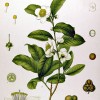
Jason Camlot, “The First Phonogramic Poem: Conceptions of Genre and Media Format, Circa 1888”
By 1888, the technology of the phonograph, and the medium of the phonograph cylinder, were established as market-ready. What was the imagined potential of this media technology in relation to known modes of communication and expression? This article recounts how “The Phonogram” or phonographic letter was prototyped from 1887 to 1892 through the efforts of Thomas Alva Edison and his London agent George Gouraud. Edison’s prototyping work and Gouraud’s efforts in developing recordings, scripts for phonogramic speeches, and formats for typographical transcription of the cylinder recordings represent a rich case study for documenting the nature and significance of their efforts to consolidate the medium and define the generic parameters of the phonogram (a speech recording) as a distinct form of global communication. By theorizing the relationship between late-Victorian concepts of medium, format and genre, respectively, and by interpreting the “first phonogramic poem” (16 June 1888) as an articulation of the meaning of sound recording at the historical moment that it arrived as a viable media technology, this article helps explain how sound recording technologies were imagined in relation to specific genres of communication. Drawing upon periodical literature, and documentation available through the Thomas Edison Papers archive—including phonogramic transcripts and speeches, marketing and foreign business strategies, patent applications, and packaging and design documents—this article explains, in particular, the generic and rhetorical protocols that informed the attempt to establish the phonogram as a new medium of intimate communication and international correspondence.

Shanyn Fiske, “Modeling Masculinity: Engendering the Yellow Peril in Fu-Manchu and Thomas Burke’s Limehouse Nights”
This entry deals with the event of the Yellow Peril, which generated fears of “Chinamen” as sexual predators, savage murderers, and criminal masterminds plotting world domination. Curiously, while these images lend Chinese men an aura of powerful virility, popular fiction credited with sensationalizing the Yellow Peril often depicted them as asexual or effeminate. Focusing on the first three novels of Sax Rohmer’s Fu-Manchu series and Thomas Burke’s Limehouse Nights (1916), I challenge the common critical assumption that the feminization or desexualization of Chinese men served to symbolically disempower a political threat. Instead, I suggest that in their interactions with their white counterparts, effeminized and / or desexualized Chinese male characters highlight problems in turn-of-the-century reconfigurations of masculinity. Such problems included recalibrating the Victorian balance between gentlemanly restraint and soldierly aggression in an unstable imperial context; redefining a sense of autonomy in a mechanized world; and renegotiating gender relations in a feminist environment. More broadly, I venture that the critical apparatus of Orientalism, which a number of theorists have applied to Rohmer’s works, is inadequate in explaining the complex interactions between Chinese and Britons in the early twentieth century. In examining the entangled racial and sexual tensions in these works, this entry historicizes the Yellow Peril within a broader context of Western male self-fashioning.

Erika Rappaport, “Object Lessons and Colonial Histories: Inventing the Jubilee of Indian Tea”
The fifty-year Jubilee of Indian tea was celebrated in the Spring and Summer of 1887, coinciding precisely with Queen Victoria’s Golden Jubilee. This Jubilee had nothing to do with Victoria per se, but rather the commercial anniversary invented Indian/Ceylon tea as an icon of imperial Britishness. Industry leaders used 1887 to highlight specifically two key events in tea’s commercial and imperial history, the first moment tea arrived in Britain from Assam (1837) and the first time (April 1887) that tea from both India and Ceylon surpassed imports from China. They explained the later development by arguing that Britons had learned to appreciate modern industrial production and plantation agriculture more than old-fashioned and dirty Chinese modes of production. The Jubilee thus marked publicly how and when tea became a mass-produced and consumed imperial product.

Judith L. Fisher, “Tea and Food Adulteration, 1834-75”
This essay examines the adulteration of tea in the contexts of free trade and the politics of empire. It contends that the importance of tea as a healthful, particularly British drink made the adulteration of the beverage a significant matter for social and moral concern. Adulterated tea was primarily from China and so was typed as “foreign” and unclean in contrast to tea imported from Assam, India, that was defined as “British” and healthy.
